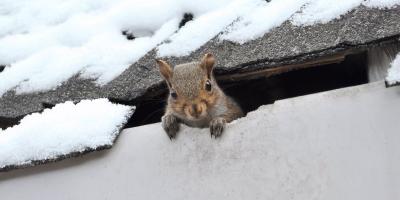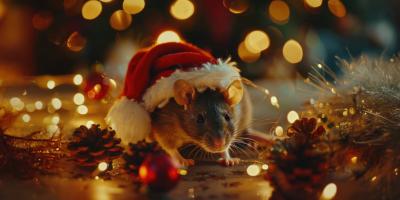What Pinecones Can Tell You About Your Fall Insect Problem

Your dogs sometimes try to eat them, your kids use them as backyard ammunition, and your yard is full of them, but what do pinecones have to do with pest issues? Knowing the answer to this question can actually help you determine which pest you’re dealing with and whether or not you need to enlist the help of professionals.
In true back-to-school fashion, let’s start with a quick ecology lesson. Northern New England is uniquely positioned just below the world’s second largest biome: the boreal forest, or snow forest. The boreal forest that dominates the Canadian landscape, second only to the oceans in coverage of the earth, is the ultimate definition of evergreen. The North American expanse of evergreen, however, actually takes root in the New England-Acadian Forests. These mixed forests grow throughout New Hampshire and Maine and are mostly coniferous, consisting largely of pines, spruces, and hemlock trees.
Why Evergreens Can Give You The Blues
If you’re living in Northern New England, you’re living in or near a coniferous forest. Conifer is a Latin word, a compound of conus (cone) and ferre (to bear), literally translating to "the one that bears cones". The pinecones from your evergreen surroundings, though probably a taste that your dog will drop and leave behind, serve up the Western Conifer Seed Bug’s favorite meal.
These insects feed on the developing seeds and flowers of pine, spruce, and hemlock trees. If your yard is full of these types of trees, your home can provide the perfect overwinter refuge for the Western Conifer Seed Bug. Being that these bugs have their dietary restrictions listed right in their names, you won’t have to worry about them feeding on much else. Unless they are entering your home in large numbers, which is common as they continue to spread into the Northeast, there are bigger bugs to squash - though you may not want to.
A Case Of Mistaken Identity
The Western Conifer Seed Bug is often mistaken for a much more damaging pest, the Brown Marmorated Stink Bug. Both types of insects will produce a pungent odor as a defense mechanism when threatened or crushed, though the Stink Bug is more prone to do so. Seed Bugs that feed on pinecones emit an odor that is, you guessed it, pine scented. Stink Bugs smell more like coriander. The real issue with the Brown Marmorated Stink Bug is it’s dietary choices.
While the Seed Bug has its meal of choice, the Stink Bug feeds on a wide variety of host plants. From apples and other fruits to ornamental plants and beans for human consumption, the Stink Bug will ravage through a kitchen in search of food, ruining fresh produce and plants along the way. These bugs can spread disease and cause allergic reactions due to their direct interaction with fresh foods in the kitchen.

Brown Marmorated Stink Bug image courtesy of Ted Kropiewnicki, bugguide.net. Western Conifer Seed Bug image courtesy of Giancarlo Dessi, Wikimedia Commons
Regardless Of Their Scent, They’re Bringing It Indoors
The JP Pest Services Home Protection Plan consists of two pest-fighting treatments that are performed typically during this time. This program targets the cracks and crevices of your home where these invading pests can gain entry. Stopping these pests at their points of entry is vital because once they’re inside, they’re more difficult to eliminate.
Due the seasonal nature of fall invading pests, this program is most effective when implemented before fall begins. Waiting until after fall starts or after you notice invaders may make your pest-control program less effective. Contact us today to keep these scented pests out!



